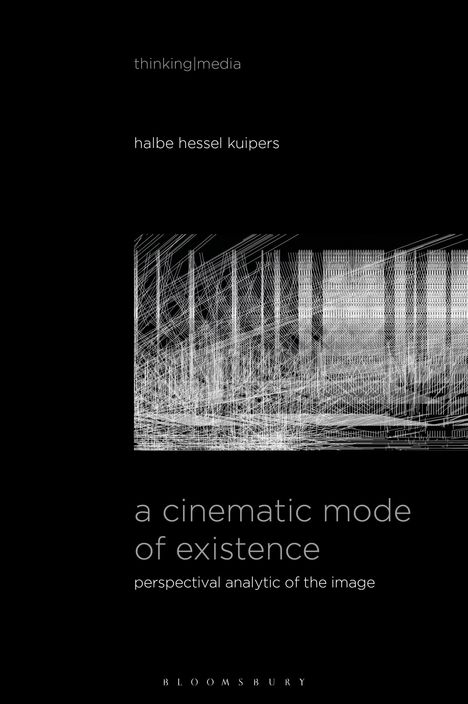Halbe Hessel Kuipers: A Cinematic Mode of Existence, Gebunden
A Cinematic Mode of Existence
- Perspectival Analytic of the Image
Sie können den Titel schon jetzt bestellen. Versand an Sie erfolgt gleich nach Verfügbarkeit.
- Herausgeber:
- Bernd Herzogenrath, Patricia Pisters
- Verlag:
- Bloomsbury Academic, 05/2026
- Einband:
- Gebunden
- Sprache:
- Englisch
- ISBN-13:
- 9798216373094
- Artikelnummer:
- 12511707
- Umfang:
- 304 Seiten
- Gewicht:
- 454 g
- Maße:
- 216 x 140 mm
- Stärke:
- 25 mm
- Erscheinungstermin:
- 28.5.2026
- Hinweis
-
Achtung: Artikel ist nicht in deutscher Sprache!
Klappentext
A Cinematic Mode of Existence gives a new, perspectival analytic of the image attempting to break open and pluralize cinema's monolithic, modern perspective and its ontology.
Do cinema's moving images have the affective capacity to shape our eyes anew? Does it, then, engender novel points of view and different perspectives? This ontogenetic proposition is what moves this book: can we imagine that we walk out of the cinema and see through Akerman's Jeanne Dielmann a world restrained by patriarchy? Can we recall with Apichatpong's monkey ghosts (li phi ) past lives that each expresses its own world? Do we then breathe the warm air and feel the tranquility of Ozu's universe? In short, does cinema move beyond itself; that is, beyond its supposed material conditions as well as its given spectatorship? By ways of an ontological turn in film studies, A Cinematic Mode of Existence works out this proposition, giving a perspectival analytic of the image.
Moving across a number of filmic works and oeuvres by different makers and of different types - from documentary to experimental to fiction, and engaging with concepts central to film studies, including spectatorship, the camera-eye, the cut, themes and motifs, the gaze, and self-reflexivity as well as more metaphysical concepts, such as the image, the Other, the bifurcation of nature, anthropocentrism - the film-philosophical analytic seeks to rethink what cinema is. It is seen no longer as quintessential modern undergirded by the modern perspective and its logic of representation, but as an extra-modern machine closer to spiritual and ritualistic practices and the modes of existence that live them. Is it here that we see how cinema genuinely lives in the world?


